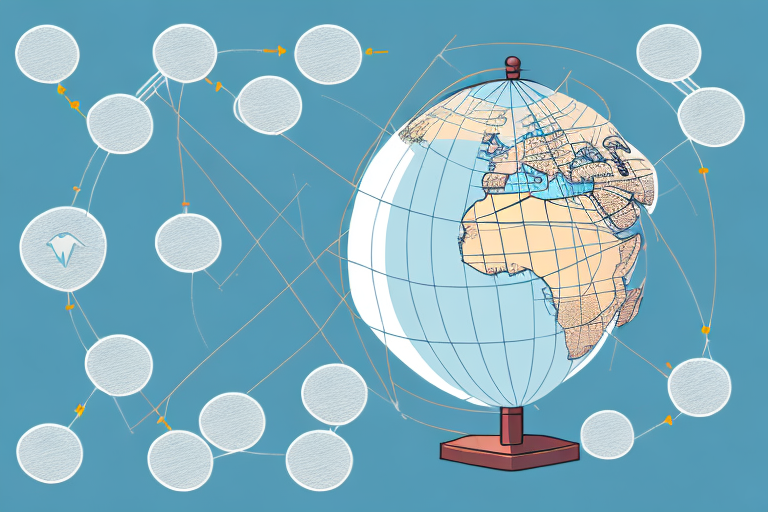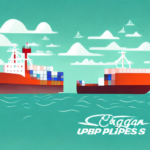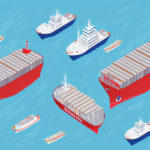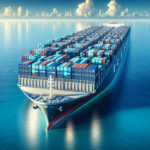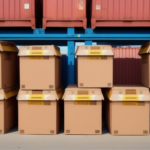Understanding International Economy Shipping
International economy shipping offers a cost-effective solution for transporting goods across the globe. It primarily utilizes ocean freight ships to move large volumes of cargo in standardized shipping containers, making it an ideal choice for businesses and individuals looking to minimize shipping costs without urgency.
While it may not be the fastest shipping option available, economy shipping provides significant savings, especially for non-perishable goods. However, it's crucial to be aware of potential additional fees such as customs duties and import taxes, which vary based on the destination country and the nature of the goods being shipped. Thorough research and understanding of these fees can help avoid unexpected costs.
Key Factors Influencing Shipping Timeframes
Distance Between Origin and Destination
The geographical distance between the shipment's origin and its destination plays a significant role in determining the shipping time. Longer distances naturally require more time to traverse.
Mode of Transportation
The choice between sea, air, or land transportation affects both cost and delivery speed. While sea freight is economical, air freight offers faster delivery but at a higher cost.
Shipping Route Traffic
High traffic on shipping routes can lead to delays. Busy ports and congested shipping lanes may extend the delivery timeline.
Customs and Clearance Procedures
Efficient customs processing is essential for timely delivery. Complex or stringent customs regulations in either the origin or destination country can cause delays.
Weather Conditions
Extreme weather events such as hurricanes, typhoons, or heavy snowfall can disrupt shipping schedules. Seasonal weather patterns like monsoons or cyclones also impact shipping times. Monitoring weather forecasts and planning accordingly can mitigate potential delays.
Popular International Economy Shipping Routes
- Transpacific Shipping (Asia to the United States): Typically takes 2-4 weeks.
- Transatlantic Shipping (Europe to the United States): Typically takes 2-3 weeks.
- Asia-Europe Shipping: Typically takes 4-6 weeks.
- Asia-South America Shipping: Typically takes 5-7 weeks.
These timeframes are approximate and can vary based on the factors mentioned above. Economy shipping often involves multiple stops, which can extend the overall timeline.
The International Economy Shipping Process
Step-by-Step Overview
- Shipment Information: Provide details about your shipment, including size, weight, and destination.
- Pickup and Transport: The shipping company arranges for your shipment to be picked up and transported to the port.
- Ocean Freight: Your shipment is loaded onto an ocean freight ship and transported to the destination port.
- Customs Clearance: Upon arrival, the shipment undergoes customs and clearance procedures before final delivery.
- Tracking: Monitor your shipment's progress throughout the entire process for better visibility.
Proper documentation and accurate information are vital to avoid delays and additional fees during customs clearance.
Tracking Your International Economy Shipment
Many shipping companies offer real-time tracking for international economy shipments, allowing you to monitor the location and status of your goods from pickup to delivery. Typically, a tracking number or unique identifier is provided, which can be used on the shipping company's website for updates.
While tracking provides valuable insights, it's important to understand that factors like weather conditions and customs delays can affect the accuracy of tracking information. For the most reliable updates, contact your shipping provider directly if you have concerns about your shipment.
Expediting International Economy Shipments
If you require faster delivery than what economy shipping offers, consider the following options:
- Faster Shipping Methods: Opt for air freight or express shipping services for quicker delivery times.
- Freight Forwarders: Partner with a freight forwarder to find the most efficient and cost-effective shipping solutions tailored to your needs.
- Expedited Customs Processing: Ensure all necessary documentation is complete and accurate to facilitate quicker customs clearance.
Be mindful that expedited options may involve additional costs and potential trade-offs in terms of flexibility or service levels.
Choosing the Right Shipping Option for Your Needs
When selecting a shipping method, consider the following factors to determine the best fit for your requirements:
- Delivery Timeline: Align your shipping choice with your required delivery speed.
- Cost: Balance your budget with the cost-effectiveness of the shipping method.
- Security and Protection: Ensure your goods are adequately protected during transit.
- Shipping Company Reliability: Choose reputable companies with a strong track record.
Consulting with a shipping expert can provide valuable guidance in making an informed decision that balances all your needs.
Strategies to Reduce Shipping Costs
To minimize expenses on international economy shipping, consider implementing the following strategies:
- Consolidate Shipments: Combine multiple shipments to take advantage of bulk discounts.
- Optimize Shipment Size and Weight: Reduce the size and weight of your shipments to lower costs.
- Use Freight Forwarders: They can negotiate better rates on your behalf.
- Explore Alternative Routes: Different shipping routes or modes of transportation may offer cost savings.
Balancing cost savings with delivery timelines and security is essential to ensure overall shipping efficiency.
Ensuring Safe and Secure International Economy Shipping
Protecting your shipment during transit is crucial. Follow these tips to enhance the safety and security of your goods:
- Quality Packaging: Use robust packaging materials that can withstand international shipping conditions.
- Proper Labeling: Clearly label packages with accurate destination addresses and relevant information.
- Choose Reputable Shippers: Work with established shipping companies known for secure handling.
- Insurance: Consider purchasing additional insurance to safeguard against damage or loss.
The Role of Freight Forwarders in International Shipping
Freight forwarders can significantly streamline the international economy shipping process. Benefits of using a freight forwarder include:
- Expert Guidance: Assistance in selecting the most suitable shipping options.
- Cost Savings: Leveraging bulk purchasing power to secure lower shipping rates.
- Comprehensive Management: Handling all aspects of the shipment from pickup to delivery.
- Real-Time Tracking: Providing up-to-date information and support throughout the shipping journey.
Choosing a reliable freight forwarder with experience in international economy shipping ensures a smoother and more efficient shipping experience.
Avoiding Common International Shipping Mistakes
To ensure a successful international economy shipping experience, avoid these common pitfalls:
- Incomplete Shipment Information: Always provide accurate and comprehensive details about your shipment.
- Poor Packaging and Labeling: Ensure your goods are properly packaged and clearly labeled to prevent damage and misdelivery.
- Ignoring Customs Procedures: Familiarize yourself with customs regulations and clearance procedures in both origin and destination countries.
- Unreliable Shipping Companies: Partner with reputable and experienced shipping providers to avoid delays and issues.
Educating yourself about the shipping process and collaborating with trusted partners can help you navigate and mitigate these challenges effectively.
Customs Regulations and Clearance in International Shipping
Navigating customs regulations is a critical component of international economy shipping. Key steps in the customs and clearance process include:
- Documentation: Accurately complete and submit all required paperwork.
- Shipment Description: Clearly and correctly describe your goods to comply with customs regulations.
- Taxes and Fees: Pay any applicable taxes, tariffs, or fees required by the destination country.
- Collaboration with Customs Officials: Work closely with officials to resolve any issues promptly.
Understanding and adhering to these procedures helps ensure smooth clearance and timely delivery of your shipment.
Importance of Proper Packaging in International Economy Shipping
Effective packaging is essential to protect your goods and ensure their timely arrival. Follow these guidelines for optimal packaging:
- Durable Materials: Use high-quality packaging that can withstand the challenges of international transit.
- Cushioning: Securely cushion and brace your items to prevent movement and damage during transport.
- Clear Labeling: Ensure packages are clearly labeled with accurate destination information and handling instructions.
- Compliance: Adhere to size and weight regulations required for international shipping.
Proper packaging not only protects your goods but also facilitates smoother handling and reduced risk of delays.
Future Trends and Innovations in International Economy Shipping
The international shipping industry is continuously evolving with advancements aimed at improving efficiency and sustainability. Key trends and innovations include:
- Automation and AI: Leveraging technology to streamline shipping processes and enhance operational efficiency.
- Sustainability Focus: Implementing eco-friendly practices to reduce the environmental impact of shipping.
- Intermodal Transportation: Combining different modes of transport, such as ocean, truck, and rail, to optimize logistics and reduce costs.
- Growth in E-Commerce: Expanding cross-border trade as more consumers and businesses engage in international e-commerce.
Staying informed about these trends helps businesses and individuals adapt to changes and leverage new opportunities in international economy shipping.
Additional Resources
For more detailed information on international economy shipping, consider visiting authoritative sources such as:













